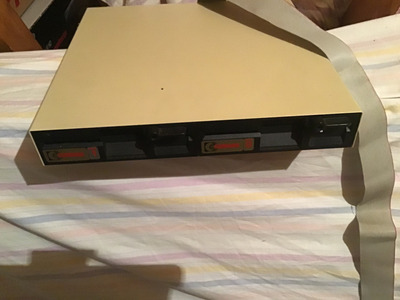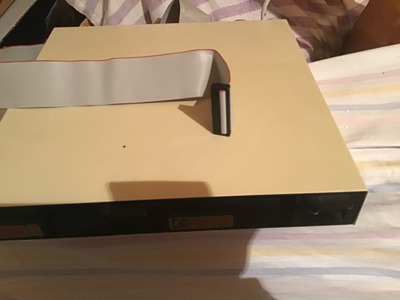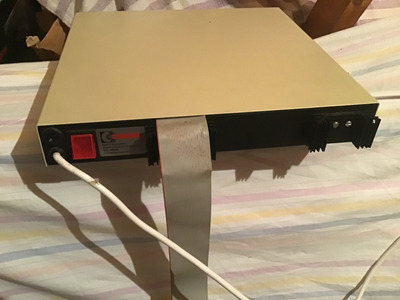Three sets of golden rules for BBC/Master floppy disc drives:
1) Use a Gotek - its easier
2) Use a Gotek - when you get bored with the BBC/Master you can repurpose it for other old school kit
3) See below 😀
Discs and media:
5.25" drives - use SD or DD media, not HD. Put another way, don't use 1.2Mb hard drives or media
3.5" drives - Use DD media. Put another way, don't use 1.44Mb High density disks, use 720k discs.
Number of tracks:
80 track drives can be used to read 40 track media, but never write to a 40 track disc in an 80 track drive. Writing to a 40 track floppy in a 80 track drive will leave you with a disc that can only be read on a 80 track drive.
(40T heads are twice the width of 80 track heads).
Floppy drive cables - data
Use a straight cable. There should be no twist in the cable between the computer and the disc drive.
If you have a PC cable with two sets of connectors with a twist in between, you can still use it, but don't connect anything after the twist.
Floppy drive cables - power
You can use the auxiliary power connector under the BBC/Master to power a floppy drive, but good luck getting hold of a compatible plug.
Note that the lack of twist means you can connect the first and second drive in any order (but pay attention to termination).
Floppy drive jumpering.
The first drive on a BBC/Master system needs to be jumpered as Drive 0 and the second drive jumpered as drive 1.
PC drives are usually jumpered as drive 1, and the twist in the cable switches the drive select signals, so that the drive at the end of the cable after the twist becomes drive 0.
In the early days the jumpering was done by links or by a small slide switch - just make sure that the links/jumpers are set correctly
In later years floppy disc drives were permanently jumpered to drive 1, usually by means of a surface mounted zero ohm resistor. The pads are usually labelled - "0" will have no SMD fitted, "1" will be fitted.
To use that kind of drive on a BBC, you need to remove the SMD link from "1" and then connect the pads for "1" together. The best technique is to have a blob of solder on the tip of the iron and apply it to the link to be removed, then allow the surface tension of the solder to lift the component away. Wipe the component and the excess solder on a wet sponge. To fit the link on the "0" pad, tin the two pads first, then find some stranded cable - strip back about half an inch, then fold back all but one strand. Solder that single strand across the two tinned pads, and then cut away the excess.
Drive termination
3.5" drives - Don't ever recall seeing terminating resistors on a 3.5" drive...
5.25" drives - fit the terminator pack on the last drive on the chain. Remove the terminator on the second drive closest to the computer
Mixed on the same cable - Dunno, never done it - suggest putting the 5.25" drive on the end of the chain and fitting terminators to it.



